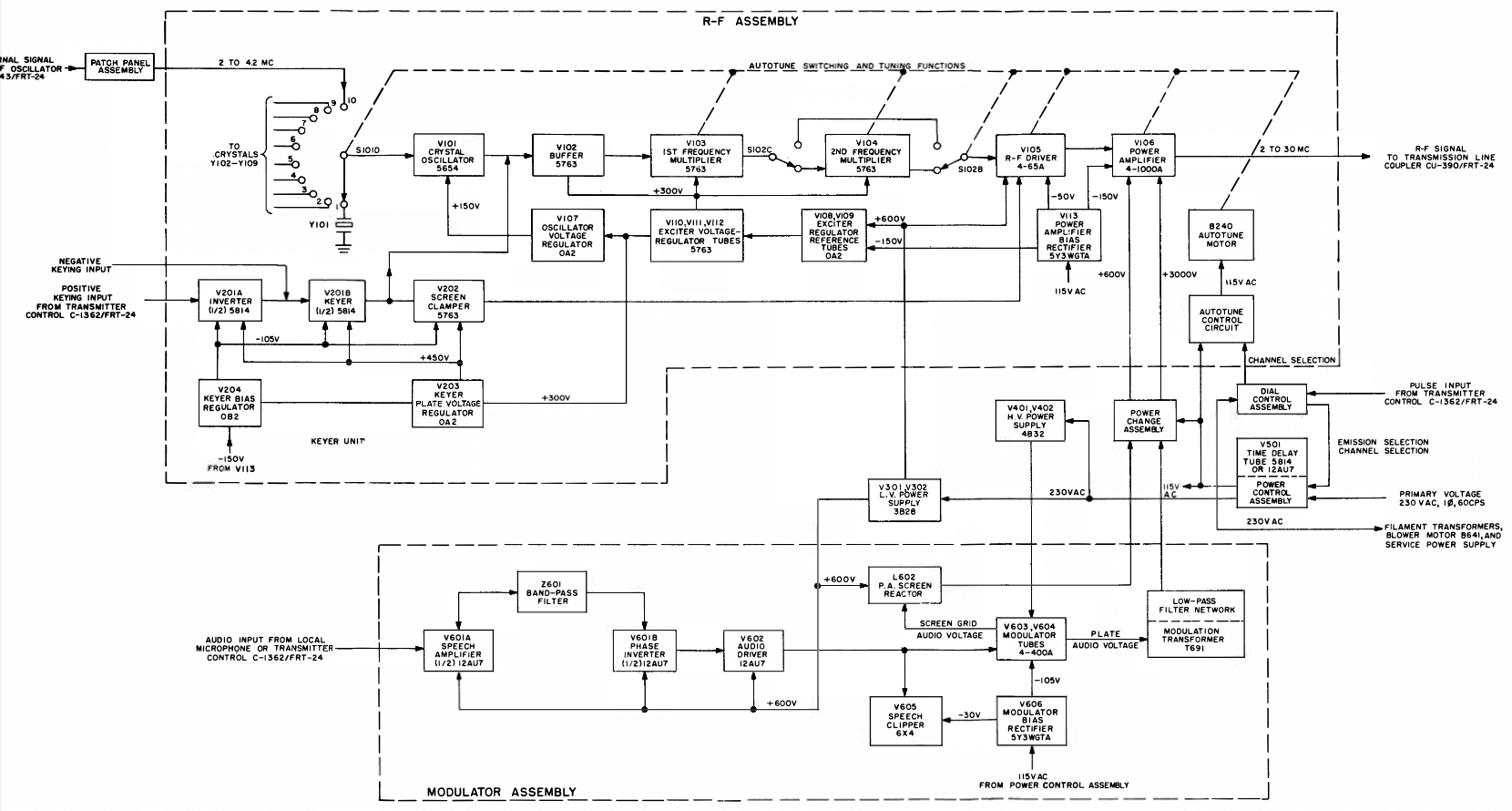| GENERAL DESCRIPTION |
 AN/FRT-24 1 KW TRANSMITTER
AN/FRT-24 1 KW TRANSMITTER
| TECHNICAL SPECIFICATIONS | |
| Frequency range | 2 to 30 mc |
| Number of channels | 9 |
| Type of frequency control | Crystal or stabilized oscillator |
| Type of emission and modulation capability | A-1 (carrier on-off) A-3 (phone) 100% |
| Keying speed | 600 words per minute (240 dot cycles per second) |
| Nominal carrier output | (1) 250 watts, 500 watts, or 1000 watts for A-1 emission, into a 600-ohm load, with a maximum SWR of 2 to 1 (2) 250 watts, 500 watts, or 1000 watts for A-3 emission, into a 600-ohm load, with a maximum SWR of 2 to 1 |
| Frequency stability | (1) With crystal oscillator, .003% (2) With R-F Oscillator O-243/FRT-24, .004% ±240 cps |
| Crystals | Type CR-18/U |
| Distortion | Less than 5% total harmonic distortion at 1000 cps and 90% modulation when clipping is not used |
| Noise | At least 40 db below 100% modulation |
| Power source requirements | (1) Voltage: 230/208 volts ±10% (2) Frequency: 50/60 cps ±5% (3) Number of phases: 1 |
| Ambient temperature range for satisfactory operation | 0°C (32°F) to 50°C (122°F) |
| Maximum relative humidity | Up to 95% |
| Maximum elevation above sea level | 10,000 feet |
| Specifications may change without notice | |
| TUBE COMPLEMENT | |||||
| RF stages | AF stages and modulator | Rectifiers | |||
| Number | Type | Number | Type | Number | Type |
| 1 | 4-1000A | 2 | 4-400A | 2 | 4B32 |
| 1 | 4-65A | 2 | 12AU7 | 2 | 3B28 |
| 3 | 5763 | ||||
| 1 | 5654 | ||||
| THIS TYPE OF TRANSMITTER IS INSTALLED IN THE FOLLOWING COUNTRIES | |||||
| ITU | Country | ITU | Country | ||
| USA | USA | ||||